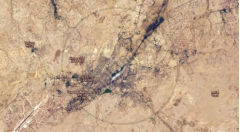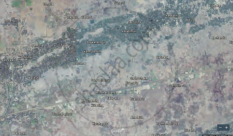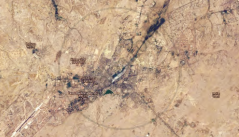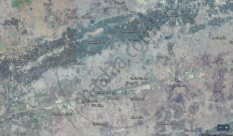Topics
Field Visit
Location and Extent
Physiography and Drainage
- Physical Divisions of India
- The North Indian Mountains
- The Himalayas
- North Indian Plains
- The Peninsular Indian Plateau
- The Indian Coastal Plains
- The Indian Islands
- Physiography of Brazil
- Brazilian Highlands
- The Great Escarpment in Brazil
- Coastline of Brazil
- Brazilian Plains
- Brazilian Island
- Drainage of Brazil
- Drainage Systems of India
- Himalayan Rivers
- Peninsular Rivers
Climate
Natural Vegetation and Wildlife
Population
Human Settlements
Economy and Occupations
Tourism, Transport and Communication
Geography - Physical Divisions of India
Identification of Physical divisions
- Identification of Physical Divisions
Geography - North Indian Mountains
Himalayas
Associated mountains
- Concept of Associated Mountains
Geography - North Indian Plain Region
Deserts
- Desert
Western Plains
- Concept of Western Plains
Central Plains
- Concept on Central Plains
Delta region
- Concept of Delta Region
Eastern Plains
- Concept of Eastern Plains
Geography - Peninsular Plateau Region
Chhotta Nagpur Plateau
- Concept for Chhotta Nagpur Plateau
Malwa Plateau
- Concept on Malwa Plateau
Maharashtra Plateau
- Concept for Maharashtra Plateau
Karnataka Plateau
- Concept for Karnataka Plateau
Telangana Plateau
- Concept for Telangana Plateau
Geography - Western Ghats and Eastern Ghats
Eastern Ghats
- Concept on Eastern Ghats
Sahyadries
- Concept on Sahyadries
Geography - Coastal Region
- Geography - Coastal Region
Eastern coastal plain
- Coastal Region - Eastern Coastal Plain
- Concept for Western Coastal Plain
Western coastal plain
- Concept for Western Coastal Plain
Geography - Indian Islands
- Geography - Indian Islands
Eastern Islands
- Indian Islands - Eastern Islands
Western Islands
- Indian Islands - Western Islands
Geography - Practical 1
Cartography
- Concept on Cartography
Geography - Practical 2
Two dimensional diagrams
- Two Dimensional Shapes
One dimensional diagrams
- Concept on One Dimensional Diagrams
Economics - Introduction of an Economy
Introduction of an Economy
- Economy
- Types of Economy
- Main Features of Economy
Economics - Basic problems of an economy solution
Solutions
- Concept for Capitalism
- Concept for Socialism
- Mixed Economy
Problems
- Introduction of Basic Problems of an Economy
- Problems- for Whom to Produce
- Problem - How Much to Produce
- Problem - by Whom to Produce
Economics - Inflation
Introduction
- Introduction of Inflation
Effects of inflation
- Effects of Inflation
Measures of Inflation
- Measures of Inflation
Causes of inflation
- Causes of Inflation
Economics - Public distribution system and consumer protection
- Measures of Inflation
Public Distribution system - meaning and explanation
- Public Distribution System - Meaning and Explanation
Introduction
- Introduction of Public Distribution System and Consumer Protection
Objectives of Public Distribution system
- Objectives of Public Distribution System
Remedial Measures
- Remedial Measures Public Distribution System and Consumer Protection
Consumer Protection
- Consumer Protection - Rights and Duties of Cunsumer, Food Adulteration
Drawbacks of Public Distribution system
- Drawbacks of Public Distribution System
Progress of Public Distribution system
- Progress of Public Distribution System
Definition
Settlement: A settlement is a place where people have come to live and have built homes.
Nucleated Settlements: Settlement where buildings or houses are grouped or clustered around a central point or nucleus is known as nucleated settlements.
Dispersed Settlements: Settlement where buildings or houses are scattered or dispersed, is known as a dispersed settlement.
Notes
Settlement Patterns in India
- Given the variety of climatic factors, water availability, land slope, and level of development, we can see a variety of settlement patterns in India.
- Usually there are two kinds of settlement patterns in India. These are nucleated and dispersed settlement.
Nucleated Settlement
|
Nucleated Settlements |
- Settlement where buildings or houses are grouped or clustered around a central point or nucleus is known as nucleated settlements.
- Nucleated settlements can be found throughout the Narmada Valley plateau region, paddy lands in Bihar, Uttar Pradesh, the Vindhyan Plateau, and other cultivated areas of India.
Dispersed Settlements
|
Dispersed Settlement |
- Settlement where buildings or houses are scattered or dispersed, is known as a dispersed settlement.
- Dispersed settlements, on the other hand, are found in tribal areas covering the central part of India, eastern and southern Rajasthan, Himalayan slopes, and land with dissected and uneven topography.
Example
Some amenities and facilities are given here. Tick (correct) in the relevant column and complete the table on the basis of their presence in urban and rural areas or both. And write five sentences on each with examples from your vicinity.
| Amenity | Available in Villages |
Available in cities |
Explanation |
| Petrol Pump | |||
| Weekly Market | |||
| Primary Health centre |
|||
| Police Outpost | |||
| Art Gallery | |||
| Gram Panchayat | |||
| Agricultural Produce Market Committee (APMC) |
|||
| Primary School | |||
| Senior School | |||
| College | |||
| Shop | |||
| Multi-speciality Hospital |
|||
| Metro Station | |||
| Bus Station | |||
| University |
| Amenity | Available in Villages |
Available in cities |
Explanation |
| Petrol Pump | ✓ | ✓ | Petrol pump is one of the most basic facilities in both rural area and urban area. In both rural and urban Bhandara, there are petrol pumps run by the government and private agencies. Nearly all the pumps are situated near the highways. Indian oil, Reliance and HP are the major services providers. |
| Weekly Market | ✓ | This facility is the majority found in the rural area. There are over 100 weekly markets in the district. These markets provide all kind of necessities to the people. Amangaon and Lakhan pur are the largest cattle market. Mostly agricultural commodities and other basic goods are sold in these markets. It is very rarely found in the urban areas of Bhandara. | |
| Primary Health centre |
✓ | ✓ | A health centre is one of the most basic facilities in both rural areas and urban areas. In the rural areas, there are PHC in Shahapur, Amangaon and many other sub-centres run by the Panchayats. In urban areas, There are many medical facilities, but the number of PHC is limited. |
| Police Outpost | ✓ | ✓ | Police outpost and station is one of the most basic facilities in both rural areas. Both the rural and urban areas have many police stations. There is the major Rural police station in Bhandara rural. In the urban areas, there are the offices of the SP, DySP and other officials. Besides this, there are many police control rooms in the district. |
| Art Gallery | ✓ | Both rural and urban Bhandara does not have any famous art gallery. The nearest art gallery in Mauda, about 1 hour from Bhandara. There are many production centres, art centres and galleries in Mauda. Some of them are Sachi gallery Gayatri art and the Numismatics gallery. Also, the area does not have any museum or other cultural centres. | |
| Gram Panchayat | ✓ | This is mainly found in the rural Bhandara. The area has about 7 Gram Panchayats in the Bhandara, Lakhandur, Lakhani, Mohadi, Pauni, Sakoi and Tumsar blocks. All the major decisions regarding the development of the villages, weekly markets and other facilities are taken in the panchayat meetings. | |
| Agricultural Produce Market Committee (APMC) |
✓ | APMC is mainly found in the rural areas of Bhandara. There are 5 APMC in the district in Bhandara, Lakhandur, Lakhani, Pauni and Tumsar. It is constituted by the state government for regulating the trade in specific agricultural, horticultural and livestock products. Wheat, Paddy, gram and peas are some of the crops covered by the APMC in Bhandara. | |
| Primary School | ✓ | ✓ | Schools are one of the most basic facilities in both rural area and urban area. There are many Playschool and primary schools in the nearby Bhandara. Many of them are operated by private individuals. Many Playschools like Bachpan, Eurokids, Meghe and other primary schools like Maharshi Vidya Mandir and Royal Public School operate in the area. |
| Senior School | ✓ | ✓ | Schools are one of the most basic facilities in both rural area and urban area. There are many senior secondary schools in the nearby Bhandara. Many of them are operated by private individuals. Some of them are the Maharshi Vidya Mandir, Sunflag school, Shri Satyanarayana Mandal and Royal Public School. |
| College | ✓ | Colleges are one of the most basic facilities in both rural area and urban area. The number of colleges in the rural areas of Bhandara is very limited. The urban areas have a number of private and government colleges providing arts and technical degrees. Govt College of Education, Govt. ITI, Dr Milind Yerne college, J M Patel college and Vidyaniketan college, Vidharbha college are some of them. | |
| Shop | ✓ | ✓ | Shop is one of the most basic facilities in both rural area and urban area. Both the rural and urban areas have many shops selling a variety of commodities. The rural areas also have many weekly markets. The number of supermarkets and other departmental stores in rural areas is very limited. The urban areas of Bhnadara have some supermarkets and small shopping malls. |
| Multi-speciality Hospital |
✓ | Hospitals are one of the most basic facilities in both rural and urban area. The number of hospitals in the rural areas of Bhandara is very limited. The urban areas have a number of private and government multi-speciality hospitals. City Care, Lakh and smile multi-speciality hospitals are some of the private hospitals. Districts General Hospital is the government hospital in the area. | |
| Metro station | ✓ | Railway is one of the most basic facilities in both rural area and urban area. There are no metro stations in the Bhandara area. But in May 2018, the Maharashtra metro rail corporation and the Indian railway decided to extend the Nagpur metro route to Katol, Wardha, Ramtek and Bhandara. Currently, the Bhnadara road railway station serves the rail transportation needs of the area. | |
| Bus station | ✓ | ✓ | Railway is one of the most basic facilities in both rural area and urban area. There are many bus services provided by the state government and private agencies. Government bus depots are present in both the rural and urban areas. Bhandara, Tirora, Gondiya, Pauni, Sakoli and Tumsar are the major bus stands in the region. All these areas also have respective bus depots. |
| University | ✓ | Universities are one of the most basic facilities in both rural area and urban area. The number of Universities in the rural and urban areas of Bhandara is very limited. The nearby cities have a number of private and government colleges providing arts and technical degrees. Mahatma Gandhi Central University, Ambedkar Technological University, Animal and Fisheries University and University of Health Sciences are some of the government universities. |
Example
Tell whether settlements shown in images (a) and (b) are urban or rural.
|
(a) |
(b) |
The settlements depicted in both images are rural settlements. Both the areas are depicted as having no proper facilities, building or the skyscrapers of the cities. Both of them are even devoid of proper road facilities.
The area is shown in figure:
(a) is a very interior deserted area. There are no signs of human habitation in the area. The area is shown in figure
(b) has a small patch of greenery in the vicinity. There are few settlements in the area most of them are very scattered. Thus the areas depicted are rural areas that are away from the main cities.
Example
Study the two types of settlement patterns in India given in figure (a) and (b) Answer the following questions:
|
|
|
- Identify the type of settlements?
- Which one is a nucleated settlement? why?
- Which one is a dispersed settlement? What could be the reason behind it?
- Can you guess in which regions are these settlements located in India?
- Fig 'a.' Settlement Type is: Nucleated and
Fig. 'b.' Settlement Type is: Linear and Dispersed settlement. - Fig.'a.' Shows the image of a Nucleated settlement, because it is a cultivated land and has a centrally located water body.
- In Fig. 'b.' dispersed settlement is observed due to unsuitable topography.
- Settlement in Fig.'a.' is located in the north Indian plain, it might be the river Ganga Basin and settlement in the Fig. 'b.' is located in hilly terrain covered with forest and also a road passing through leads to a dispersed settlement.
Related QuestionsVIEW ALL [11]
Study the two types of settlement patterns in India given in figure (a) and (b) Answer the following questions:
|
|
|
- Identify the type of settlements?
- Which one is a nucleated settlement? why?
- Which one is a dispersed settlement? What could be the reason behind it?
- Can you guess in which regions are these settlements located in India?




 (a)
(a) (b)
(b)